Can you imagine a life without plastics? Perhaps not.
Everything is made of plastic; from stuff on WHO’s model list of essential equipment – plastic-based surgical masks and respirators – to the device you’re reading this on.
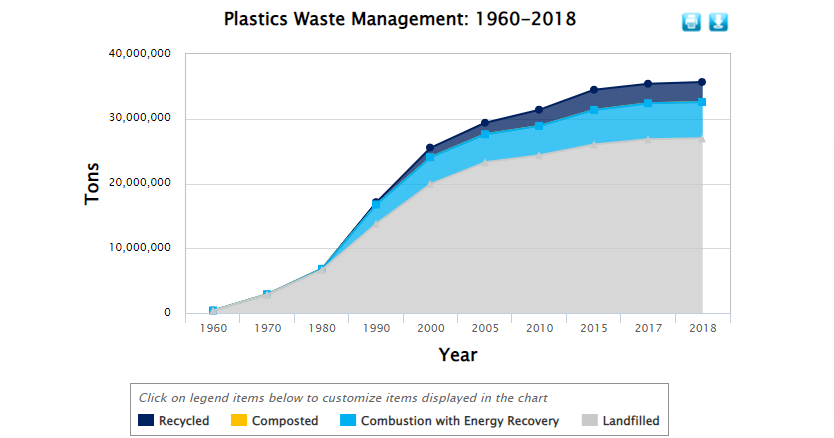
Source: American Chemistry Council, the National Association for PET Container Resources, and The Association of Plastic Recyclers.
Yes, plastic has become an integral part of our lives. To have a statistical figure, in 2018 alone, plastics generation in the United States was 35.7 million tons.
Let’s change the question. Can you believe that humans managed to live – fairly happily – before 1907?
(1907, because plastic was invented in this year.)
So, we can live without plastics. A 120 years addiction is not even half an eye-blink in the lifetime of humanity
And we don’t have to go back to pre-1907 levels of plastic.
We only have to find the best replacement for fossil-based plastics.
And we have an answer, already.
Biodegradable hemp-based plastics. They have the same qualities as fossil-based plastics, without the bad stuff.
This article discusses in detail whether hemp plastic manufacturing can replace fossil-based plastics. Here are the quick highlights of all the topics discussed in this article about biodegradable hemp-based plastics:
- Can hemp be used as plastic?
- Hemp plastic industry landscape and market size
- Applications of hemp bioplastics
- Challenges of using hemp plastic products
- Benefits of hemp plastic manufacturing over fossil-based plastics
- Is hemp plastic the future?
Can we use hemp as plastic?
It may sound unrealistic to think of plastics made from plants.
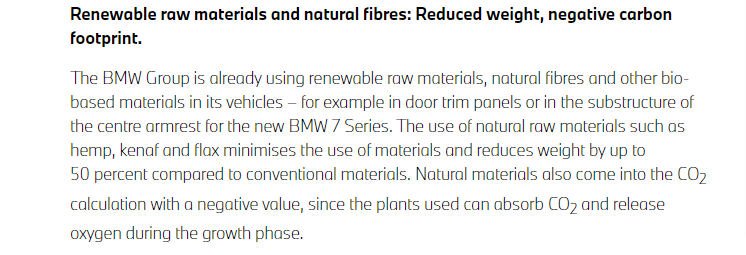
Source: BMW’s sustainability strategy through innovation 2022
But, yes, hemp can be used as plastics. The best example is how BMW integrated it with the new BMW 7 Series as a mission to achieve a negative carbon footprint.
Biodegradable hemp-based plastic is a sustainable plastic made from the cellulose of hemp plants.
The hemp plastic industry utilizes the seed husks, leaves, and stems of hemp plants as their raw materials for plastic production.
These raw materials are usually the byproducts of industrial hemp cultivation done by farmers for Cannabidiol and Cannabigerol.
The hemp plant’s high cellulose content (60 – 70%) makes it a solid and durable material for plastic manufacturing.
It is more reliable than wood or cotton because wood contains approximately 40% of and cotton up to 90% of cellulose content, making hemp a sustainable and better choice.
Hemp plastic industry: landscape and market size
Primarily, the industrial hemp market can be categorized into:
- Hemp fiber
- Hemp seed
- Hemp seed oil
- CBD hemp oil
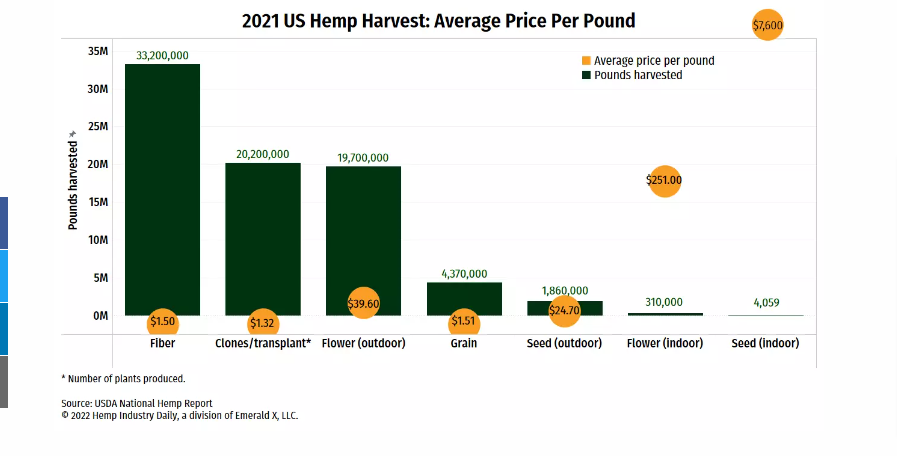
According to HempIndustryDaily, the hemp fiber component is dominating the U.S market of the hemp industry as the importance of a green and sustainable lifestyle is becoming louder.
Since hemp fiber is the primary raw material for producing hemp bioplastics, its demand will boost in the coming years.
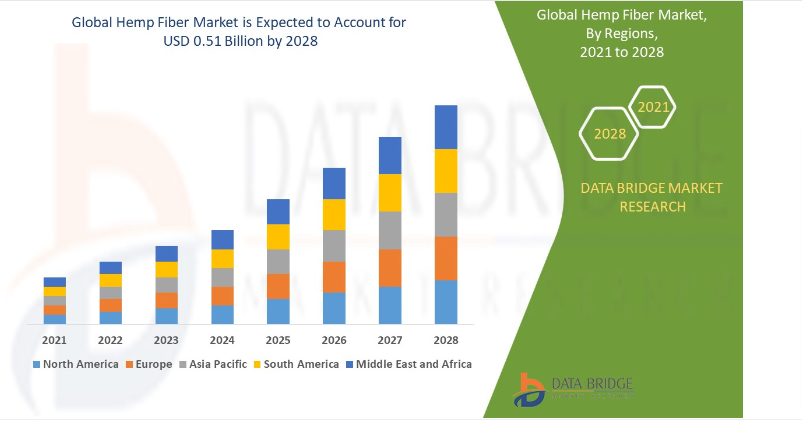
Data Bridge Market Research shows that the hemp fiber market is anticipated to grow at approximately 6.90% from 2021 to 2028. It is predicted to reach USD 0.51 billion by 2028.
When compared to fossil-based plastics, hemp plastic products will replace fossil-based plastics because they are:
- Lightweight
- Biodegradable
- Has thermodynamic properties
According to the research by Allied Market Research, the global bioplastics market size, which was $6.3 billion in 2021, will reach $18.7 billion by 2031.
An increase in the use of bioplastics will reflect the growth of the hemp plastic industry.
After analyzing the region-wise bioplastic market from North America to Asia pacific, the bioplastic market size of Asia Pacific accounts for the highest bioplastic market share.
Applications of hemp bioplastics
The incredibly versatile hemp plastics have limitless applications.
As a result, businesses started employing hemp bioplastics as an alternative to plastics, mainly in the automotive and packaging industries.
Bringing the vision of Henry Ford into reality, the automotive industry is adopting sustainable manufacturing by utilizing the benefits of hemp bioplastics.
The automotive industry is incorporating hemp fiber into vehicle components by utilizing it as fillers. And these biodegradable hemp-based plastics substitute composite contents such as fiberglass and talc.
To be more specific, door interiors, package shelves, seatback linings, and floor panel like components have the potential to use fibers such as hemp.
Another possible use for hemp-based bioplastic is in the packaging sector by utilizing it for making jars and cosmetics containers.
How is hemp bioplastic made?
The process of hemp converting into plastic varies based on the product you want to make.
As the primary step, hemp plants are pulped to extract cellulose from the hemp stalks and fibers.
Next, the cellulose is separated from the plant using acid solutions, water, and/or heat and pressure.
Using the extracted cellulose from the hemp plant, different kinds of hemp bioplastics can be made like:
- Nanocellulose: A lightweight and durable “fake plastic” that can change between a gel-like substance and a liquid.
- Hemp cellulose: A chemically heat-treated fiber used to manufacture ropes, bags, canvas materials, and other plastic products.
- Cellophane and rayon: A regenerated cellulose fiber used to make clothing, sheets, curtains, and other fabrics
- Cellulose nanocrystals: A biodegradable nanomaterial used to create barrier films, battery components, biomedical products, etc.
- Hemp composite plastics: A hemp bioplastic product that combines hemp cellulose with synthetic polymers to make curable materials used in automotive parts.
Challenges of using hemp plastic products
The truth about the hemp plastic industry is that it is still in its experimental and developing stage. The two main challenges faced by hemp plastic manufacturing are:
Difficulty in refining the hemp end products from the crop:
Most of the hemp plastic manufacturing happening today is not entirely plant-based but fiber-reinforced biocomposites.
To be more precise, the hemp stalk is strengthened with an existing polymer to make fiber-reinforced biocomposites.
And most of the polymers used to integrate into hemp bioplastics are petroleum-based or plant-based polymers such as PLA.
The petroleum-based polymers cannot be recycled and do not possess any sustainability benefits.
At the same time, plant-based polymers derived from corn or kenaf make a sustainable choice for hemp plastics, but it comes with their own drawbacks.

The drawbacks of the cultivation of corn-based PLA.
Corn cultivation lacks infrastructure since it is subsidized and mono-cropped in the U.S.
When corn is moved from the mono-crop as a feedstock for bioplastics, it will positively impact the production of hemp bioplastic products.
Fluctuations in the availability of raw materials
The U.S hemp market has seen a huge fluctuation in the production landscape since the passage of the Farm Bill.
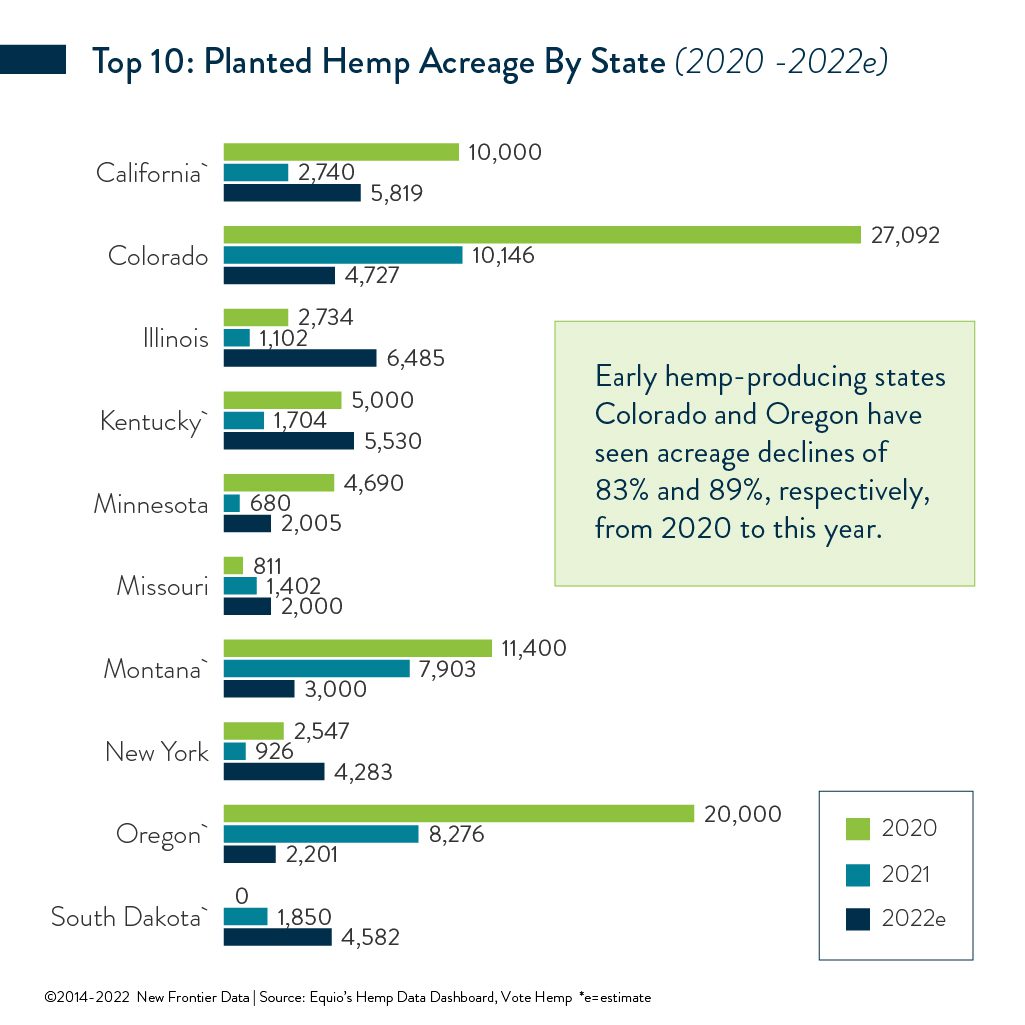
According to New Frontier Data, early adopter states like Colorado and Oregon have seen acreage declines of 83% and 89%, respectively.
At the same time, states like Illinois and South Dakota, which established their programs later, have seen increases of 137% and 148%, singly.
The slow evolution of state hemp markets and the limited facility for commercial applications significantly impact the balancing production of hemp to meet immediate demand.
Benefits of hemp plastic manufacturing over fossil-based plastics
Composition:
Hemp, composed primarily of cellulose, is safer for the environment when compared to conventional plastic. However, fossil-based plastic made from hydrocarbons is dangerous for the environment.
Biodegradable:
Hemp’s potential to cultivate prolifically and painless recyclability makes it an excellent raw industrial material. In addition, hemp plastic is biodegradable when utilized as a landfill after its course of action.
Durability:
Hemp plastic is stiffer and more durable than fossil-based plastics. As a result, hemp plastics are less likely to break, making them a secure option with a lighter weight than regular plastic.
Eco-friendly:
Hemp is an excellent carbon sequestrant that absorbs four times as much carbon dioxide as trees in their short 12-14 week growth cycle.
In addition, producing hemp plastic requires 22-45% less energy than non-renewable energy sources. These features make it carbon-negative and eco-friendly when compared to conventional plastics.
Is hemp plastic the future?
With the few existing challenges and endless benefits of hemp plastic manufacturing, hemp plastics have a potentially high replacement possibility.
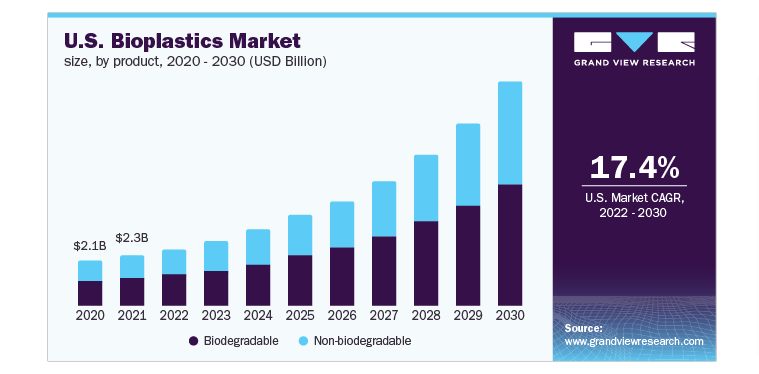
The global bioplastics market was USD 10.2 billion in 2021 and is predicted to report a 17.1% compound annual growth rate (CAGR) from 2022 to 2030.
At the same time, the U.S bioplastics market is expected to register a CAGR of 17.4% from 2022 to 2030.
Even if it has its challenges in refining the final hemp products, decreasing the amount of plastic used by 25% makes hemp a meaningful choice over fossil-based plastics.
Especially for large-scale businesses that use tonnes of plastic every year, using hemp plastic products can bring a significant change.
Also, there has been an expansion in the R&D trials to create completely plant-based and cost-effective hemp plastic products. It will expand bioplastics’ potential application, increasing its market demand.
Government bodies are bringing favorable policies like the ban on single-use plastics to transform into a more sustainable world. This will positively impact the demand for hemp plastic manufacturing.
Index:
Sources:
https://www.alliedmarketresearch.com/press-release/bioplastics-market.html
https://www.packaging-gateway.com/analysis/is-there-potential-in-hemp-for-bioplastics/
https://www.grandviewresearch.com/industry-analysis/bioplastics-industry/request/rs2
https://www.cannabistech.com/articles/why-the-world-needs-hemp-plastic/